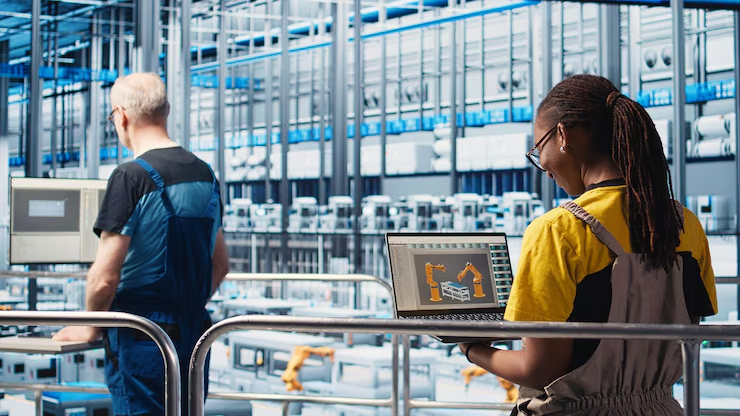Key Takeaways
- Mixing technologies are fundamental to multiple sectors, including food, pharmaceuticals, chemicals, and plastics, and they impact product safety and consistency.
- Decision-making around mixing equipment and methods directly influences output quality, operational costs, and a company’s ability to scale production.
- Automation and innovative advancements are transforming traditional blending processes, making them more efficient, safe, and eco-friendly.
- A deep understanding of product material properties, equipment functionality, and strict maintenance schedules is necessary for optimal production outcomes.
- Industry-wide trends, regulations, and increased emphasis on sustainability are shaping the future of mixing globally.
The Role of Mixing in Manufacturing
At the heart of virtually every manufacturing process lies the critical mixing step. Whether in large-scale production lines for food, pharmaceuticals, chemicals, or plastics, the mixing phase ensures that all ingredients or components are blended uniformly, creating consistent and reliable end products. Today, the importance of robust mixing equipment extends far beyond simple mechanical functions. High-capacity solutions like industrial blenders help companies achieve the precise uniformity needed to reduce production errors, minimize waste, and meet rigorous safety standards. Increasingly, manufacturers realize that even minor inconsistencies in the blending process can result in wasted or recalled entire batches, leading to significant costs and logistical headaches.
From a broader industrial perspective, the more reliably substances are mixed, the more likely a plant will meet customer expectations and tight regulatory requirements. Recent progress in mixing chemistry innovations enables businesses to work with specialized materials, boost yields, and pursue new product formats, such as advanced emulsions or nano-suspensions. This ability to adapt and embrace innovation drives market competitiveness and opens exciting possibilities for safer and more effective products.
Standard Mixing Methods and Their Applications
- Batch Mixing: Typically used for specialized or small-quantity production, batch mixing excels when tight controls over ingredient ratios and process parameters are necessary. Imagine custom chemical blends or limited-edition food products, where minor deviations could mean the difference between a successful launch and a costly recall.
- Continuous Mixing: In contrast, this method is about scalability and uniformity over long production runs. It is favored by beverage and snack manufacturers or those in the plastics industry, where thousands of pounds of product flow through mixing lines by the hour. Automated ingredient feeding and monitoring systems help keep throughput high and recipe deviation minimal.
- High-Shear Mixing: High-shear mixers are essential when mixing extremely fine particles or forming stable emulsions. This approach ensures the even suspension of active compounds or nutrients in pharmaceuticals and cosmetics.
- Dry Blending: Dry blenders are often preferred for products involving powders, crystals, or granular materials. Think spice mixes, nutritional supplements, or additive formulations, where free-flowing consistency is key.
- Planetary Mixing: Commonly used in the food, ceramics, and adhesive industries, this robust approach is ideal for materials that are sticky, viscous, or challenging to incorporate, such as dough, fillers, or heavy slurries.
When manufacturers weigh these options, they consider not only the immediate production goals but also long-term value and risk management. Selecting the wrong mixing strategy can invite separation, inadequate dispersion, or—at worst—failed safety tests and market withdrawals.
Factors to Consider When Selecting a Mixing Method
- Product Properties: Every material presents distinct challenges. Sticky, abrasive, or heat-sensitive ingredients require carefully chosen mixing methods and equipment linings. Rubber processors must avoid heat buildup, while food manufacturers focus on allergen control.
- Scalability: Production demand may spike quickly. Investing in flexible or upgrade-ready plants ensures businesses do not face costly wait times or plant retrofits when growth arrives.
- Operational Costs: Beyond the price tag, consider energy use, ongoing maintenance, cleaning processes, and downtime risk. Users are advised to perform a thorough total cost of ownership analysis rather than just comparing upfront equipment costs.
- End-Product Quality: Consistent particle size, moisture content, and appearance are critical, especially when products must meet customer or regulatory standards batch after batch.
- Regulatory Compliance: This is non-negotiable for industries such as pharmaceuticals or food. Equipment must facilitate full wash-downs, clean-in-place (CIP) protocols, and, where needed, the ability to switch recipes safely without residual contamination.
Successful plants foster collaboration between operations, engineering, safety, and quality assurance teams. When these stakeholders work together, from design to validation, they help future-proof the plant against productivity, safety, or compliance issues.
Automation and Innovation in Mixing Technologies
Modern mixing equipment integrates innovative technologies such as real-time sensors, flow meters, and networked controls. These upgrades drastically reduce human error and enable more intelligent process adjustments. Automation means recipes can be changed with a button, minimizing downtime in fast-paced settings. According to manufacturing technology transformations, connected systems increase accuracy and provide a historical record, helping pinpoint long-term improvement opportunities.
Perhaps most impressive is predictive maintenance—systems that monitor vibrations, heat, or energy use to alert maintenance teams before breakdowns occur. This approach reduces both emergency repairs and product losses. Some industries are happy to report that automated mixing lines have delivered double-digit improvements in uptime, offering compelling proof of technology’s growing value in manufacturing.
Industry Challenges: Consistency, Scale, and Safety
Operating at scale isn’t just about producing more—it’s also about maintaining consistency, even as raw ingredient qualities or supplier sources fluctuate. Even subtle variations in input quality or handling can impact solubility, blend uniformity, or shelf life. For example, a slight increase in powder humidity may cause clumping, while small equipment misalignments risk uneven distribution across batches. An effective quality program, therefore, involves frequent sampling, calibrated measurement tools, and integrated control loops.
Strategies for Overcoming Challenges
- Regular Equipment Maintenance: Routine inspections, lubrication, and timely replacement of wear parts dramatically reduce unexpected shutdowns and contamination risks.
- Robust Training Programs: Operators must understand equipment principles, troubleshooting, allergen management, and precise recipe execution to avoid costly mistakes.
- Recipe Validation: Scale-up tests and pilot runs ensure recipes that work on a small scale behave as expected in mass production, eliminating production surprises.
Organizations that embed these practices into daily routines create a culture of safety and resilience, reducing liability and protecting their brand reputation.
Sustainability and Energy Efficiency in Mixing
Environmental responsibility is taking center stage in manufacturing. Newer mixing equipment is engineered with high-efficiency motors, programmable controls, and water- or energy-saving features as standard. Many facilities are converting to closed-loop cleaning systems, recapturing and recycling rinse water to minimize environmental impact. These improvements aren’t just about compliance—they also lower long-term energy and water costs. According to industry surveys, up to 30% energy savings are possible simply by optimizing mixing times and employing variable speed drives.
Green engineering doesn’t end at the machine level. Manufacturers also leverage ingredient pre-mixing, reducing blend times and chemical waste, while eco-friendly cleaning agents help minimize hazardous discharge. These changes benefit the environment and the company’s bottom line, making sustainability a tangible business priority, rather than just a marketing tagline.
How Global Regulations Influence Mixing Standards
Adherence to global regulations, such as Good Manufacturing Practice (GMP) and Hazard Analysis Critical Control Point (HACCP), is necessary for any organization aiming to sell its products in highly regulated markets. These bodies demand meticulous process documentation—from cleaning logs to precise cycle durations—to safeguard public health and maintain ingredient traceability.
Failure to comply with these rigorous standards can lead to expensive recalls, damaged customer trust, and, in severe cases, legal action or plant shutdowns. This invests in regulation-ready mixing equipment and detailed staff training, not just a best practice, but an operational requirement for any forward-thinking manufacturer.
Emerging Trends in Industrial Mixing
- Artificial Intelligence: Machine learning streamlines process optimization and predictive maintenance, helping recognize and prevent process inefficiencies before they escalate.
- Modular Equipment: Flexible configurations allow plants to adjust quickly to new product launches or recipe changes, minimizing time lost to plant upgrades and bringing innovations to market faster.
- Advanced Materials: Innovations in non-stick, high-durability, or antimicrobial surfaces are slashing cleaning downtime and reducing cross-contamination risks.
- Green Engineering: With increasing regulatory and consumer scrutiny, energy and water conservation are more important than ever in forming plant designs and equipment investment decisions.
Staying current on these trends enables companies to respond quickly to market opportunities, regulatory changes, and evolving customer preferences, ensuring ongoing relevance and profitability in an increasingly complex manufacturing world.
Read More : The Fascinating Phenomenon of Liisbettsis Runnak

